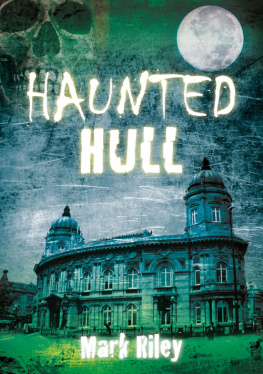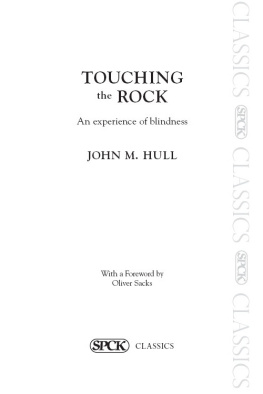An Account of the Harbour and Docks at Kingston-upon-Hull
Table of Contents
This work has been imported with its original pagebreaks intact
Please take a moment to help condense the text into simple, readable paragraphs without these [p. 172] remnants. For guidance please refer to proofreading instructions |
It has been suggested that this work be moved to a subpage.
This page appears to be a chapter, section or entry in Transactions of the Institution of Civil Engineers. If so, it should be moved to become a subpage of the main work. If you'd like to help, see Help:Subpages . |
p.1
I. An Account of the Harbour and Docks at Kingston-upon-Hull. By Mr.
TIMPERLEY, Resident Engineer to the Hull Dock Company. Com-
municated by the President, James WALKER, Esq. F.R.S. L. & E.
THE OLD HARBOUR.
The river Hull, according to Mr. Tickell, the historian of the town, formerly discharged itself into the Humber between Dryrpool and Marfleet, and that part of the present river usually called the Old Harbour, was originally no more than an open drain cut by Lord Sayer of Sallon, for the purpose of draining the country.
This harbour, from the north bridge to its junction with the Humber, was the original and, previously to the construction of the docks, the only port for the town ; its direction is nearly north and south, its length from the bridge to the end of the Garrison Jetty, 2940 feet, and the average width within the staiths, at high water of spring tides, 165 feet ; the area is therefore about eleven acres, and the depth is 22 feet.
As trade and commerce increased, the harbour became insufficient to contain all the vessels that frequented the port, many of which were therefore obliged to receive and deliver their cargoes whilst lying in the roads, by means of craft, and so crowded was it at times, that even up to the period of the Junction Dock being made, ships have been known to be twenty tides or more in passing from the Humber to the Old dock. But the crowded state of the harbour, and the consequent delay in getting to and from the quays, were not the only inconveniences ; for, from its being an open tideway, all vessels draw-
p.2
ing more than four or five feet water grounded every tide ; so that damage was frequently sustained, particularly by such as were sharply built and deeply laden. Complaints were also made by the officers of the Customs, from time to time, of the great risk and difficulty in collecting the duties, whereby, it was stated, the revenue sufiered very materially, and this ultimately led to the formation of the Old dock.
It should also be observed, that for some hours before low water, the current is so strong as to be unnavigable for vessels against the tide, and those passing with the stream are frequently injured ; the fall or declivity from the outer end of the Old dock basin to the harbour: mouth, at low water spring tides, being in general from four to five feet, and sometimes more, and the velocity of the ebb at such times from three to four miles an hour.
Before the Old dock, was begun, transverse sections were taken of the harbour by Smeaton and Grundy, from which we find that the depth of water is now about the same as it was at that time, but the river is much narrower near its jimction with the Humber ; this diminution in the width has taken place since the Humber dock was made, from the free course of the tide obstructed and retarded by the projection into the river of the quays and piers of the basin, causing a great accumulation of mud upon the shore for a considerable distance, both above and below the entrance to the Humber dock : and the mouth of the harbour has not only been narrowed by these works, but has been extended further into the Humber, and a new direction considerably to the westward given to it.
The harbour is scoured entirely by its back waters, of which the principal supply in summer is from the river Hull, which extends into the East Riding about twenty miles, and is navigable for vessels of fifty tons' burden ; but in winter, the drainage from the extensive level of the Holdemess and the low land on the west side of the river, has been, for a long time, a very powerful auxiliary in maintaining the depth.
For the convenience of vessels entering, two dolphins have been erected upon the Humber, to the east of the harbour mouth, the last in consequence of this part of the beach sanding up, as before noticed ; and there is a jetty or small pier with the necessary mooring posts, and two transport buoys a little to the south of the dolphins. In former times a chain was stretched across the entrance of the harbour, and a small charge made for all vessels passing in or out, but this restriction and impost have been discontinued for many years.
p.3
On each side of the harbour, for nearly its whole length, there are staiths or platforms, fifteen feet wide, for loading and delivering vessels ; they are private property, and in order not to obstruct the free course of the tide, are (in pursuance of an act of parliament) formed of large piles driven firmly into the ground, upon which are laid transverse beams, covered with close planking. Cranes are fixed on these staiths, and on the town side there is an extensive range of private warehouses for sufferance goods.
Tides The time of high water at Hull, at the full and change of the moon, is six o'clock, but the highest tides are generally two or three days after- wards ; the flow or rise of an average spring tide is about 21 feet at the harbour mouth, and 17 feet at the entrance to the Old dock ; that of an average neap tide, 12 feet at the harbour mouth, and 9 feet opposite the Old dock entrance : but it may be observed, that the tides occasionally rise three to four feet higher, and sometimes, though rarely, a little more, and ebb sometimes two feet or more, lower than stated above. It may be proper to notice also, that when there are many vessels in the harbour, the ebb is not so low by nearly a foot, as when it is clear of shipping. The tide flows about five hours at the harbour mouth, and four hours and a half at the entrance of the Old dock.
THE OLD DOCK.
In consequence of the confined state of the old harbour and other inconve- niences already briefly noticed, application had been made to government, a few years before obtaining the Act for making the Old dock, for a grant of part of the King's works near the Garrison, for the purpose of enlarging the harbour ; but, as a legal quay formed no part of the scheme, it was opposed by the board of Customs, and nothing further was done. Some time after, however, it was intimated to the Collector and Comptroller of Customs at the port, that if a dock and legal quay were not made at Hull, the business would be removed to some other port connected with the Humber disposed to conform to these regulations ; and a memorial was in consequence presented by the merchants of Gainsborough, praying that a legal quay might be established at that place.
It was now evident that something must be done to preserve the trade of the port, and it was at length resolved that the wishes of government as to a dock and legal quay should be complied with ; but there appears to have















